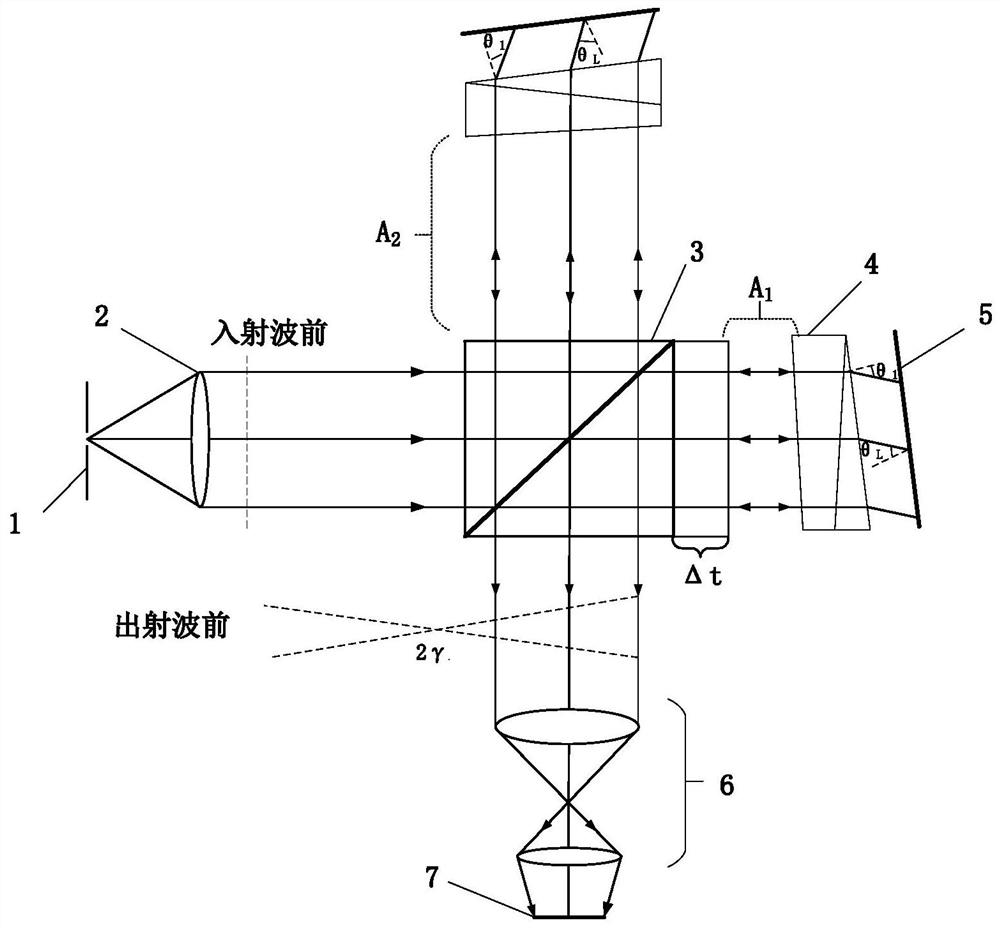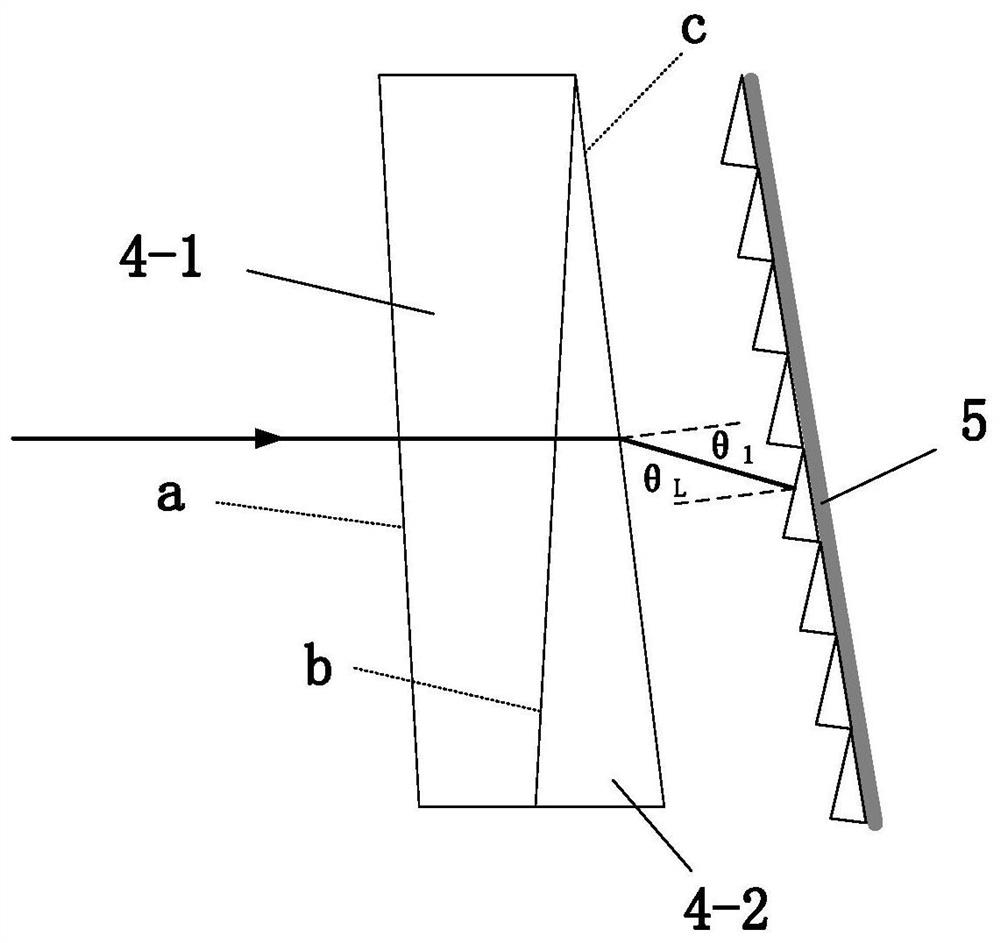Thermally-stable wide-spectrum achromatic Doppler asymmetric spatial heterodyne interferometer
A spatial heterodyne and achromatic technology, applied in instrumentation, fluid velocity measurement, velocity/acceleration/impact measurement, etc., can solve the problems of harsh system temperature control requirements, inability to measure airglow, etc., to eliminate thermal difference and increase wind speed Measurement accuracy and the effect of broadening the detection spectral range
- Summary
- Abstract
- Description
- Claims
- Application Information
AI Technical Summary
Problems solved by technology
Method used
Image
Examples
example 1
[0028] Example 1, the depth factor p of the designed harmonic diffraction grating phase is 6, and the designed wavelength is 740 nm;
[0029] Since the incident wavelength is λ, the i-th order diffraction efficiency is
[0030] Therefore, when the incident wavelength is λ=630nm, it corresponds to the seventh diffraction order of the harmonic diffraction grating 5, and the efficiency is 99.26%;
[0031] Therefore, when the incident wavelength is λ=557.7 nm, the efficiency corresponding to the eighth diffraction order of the harmonic diffraction grating 5 is 99.5%;
[0032] According to the grating equation:
[0033] Select the grating with a grating density of 1 / 64.285mm / gr, so the grating Littrow angle θ L is 8.2°.
[0034] The compound achromatic prism is selected as the field-expanding prism 4 to eliminate the dispersion effect of the field-expanding prism 4, so that the light beams on the secondary axes of each diffraction order are at the Littrow angle θ L Incident...
PUM
 Login to View More
Login to View More Abstract
Description
Claims
Application Information
 Login to View More
Login to View More - R&D
- Intellectual Property
- Life Sciences
- Materials
- Tech Scout
- Unparalleled Data Quality
- Higher Quality Content
- 60% Fewer Hallucinations
Browse by: Latest US Patents, China's latest patents, Technical Efficacy Thesaurus, Application Domain, Technology Topic, Popular Technical Reports.
© 2025 PatSnap. All rights reserved.Legal|Privacy policy|Modern Slavery Act Transparency Statement|Sitemap|About US| Contact US: help@patsnap.com


